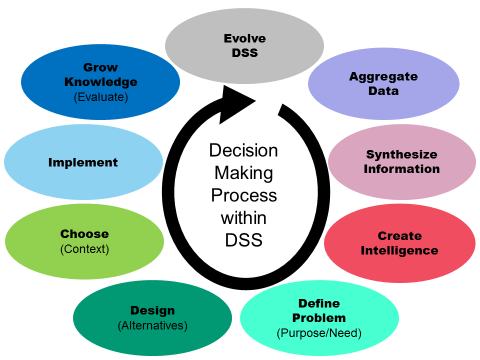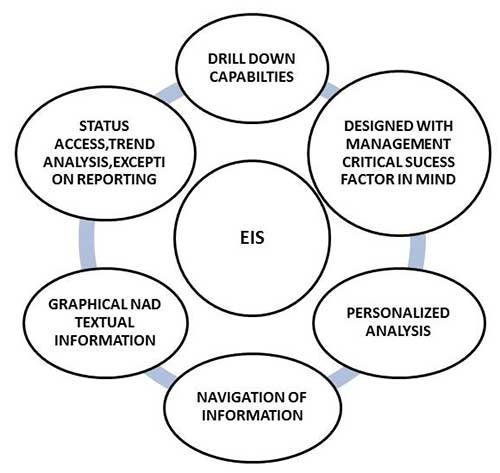Importance of HRM and Present day challenges
Importance of HRM
An organisation cannot build a good team of working professionals without good Human Resources. The key functions of the Human Resources Management (HRM) team include recruiting people, training them, performance appraisals, motivating employees as well as workplace communication, workplace safety, and much more. The beneficial effects of these functions are discussed here:
Recruitment and Training
This is one of the major responsibilities of the human resource team. The HR managers come up with plans and strategies for hiring the right kind of people. They design the criteria which is best suited for a specific job description. Their other tasks related to recruitment include formulating the obligations of an employee and the scope of tasks assigned to him or her. Based on these two factors, the contract of an employee with the company is prepared. When needed, they also provide training to the employees according to the requirements of the organisation. Thus, the staff members get the opportunity to sharpen their existing skills or develop specialised skills which in turn, will help them to take up some new roles.
Performance Appraisals
HRM encourages the people working in an organisation, to work according to their potential and gives them suggestions that can help them to bring about improvement in it. The team communicates with the staff individually from time to time and provides all the necessary information regarding their performances and also defines their respective roles. This is beneficial as it enables them to form an outline of their anticipated goals in much clearer terms and thereby, helps them execute the goals with best possible efforts. Performance appraisals, when taken on a regular basis, motivate the employees.
Maintaining Work Atmosphere
This is a vital aspect of HRM because the performance of an individual in an organisation is largely driven by the work atmosphere or work culture that prevails at the workplace. A good working condition is one of the benefits that the employees can expect from an efficient human resource team. A safe, clean and healthy environment can bring out the best in an employee. A friendly atmosphere gives the staff members job satisfaction as well.
Managing Disputes
In an organisation, there are several issues on which disputes may arise between the employees and the employers. You can say conflicts are almost inevitable. In such a scenario, it is the human resource department which acts as a consultant and mediator to sort out those issues in an effective manner. They first hear the grievances of the employees. Then they come up with suitable solutions to sort them out. In other words, they take timely action and prevent things from going out of hands.
Developing Public Relations
The responsibility of establishing good public relations lies with the HRM to a great extent. They organise business meetings, seminars and various official gatherings on behalf of the company in order to build up relationships with other business sectors. Sometimes, the HR department plays an active role in preparing the business and marketing plans for the organisation too.
Any organisation, without a proper setup for HRM is bound to suffer from serious problems while managing its regular activities. For this reason, today, companies must put a lot of effort and energy into setting up a strong and effective HRM.
HRM present day challenges
Human Resource Management Challenges (HR Challenges)
- Environmental Challenges
- Organizational Challenges
- Individual Challenges
Environmental Challenges:
The environmental challenges are related to the external forces that exist in the outside environment of an organization & can influence the performance of the management of the organization. These external forces are almost out of control of the management of the organization. These can be regarded as threats to management & should be handled in a proactive manner.
Following are the list of human resource management challenges that considered as the environmental challenges.
- Rapid Change
- Work Force Diversity
- Globalization
- Legislation
- Technology
- Job & Family Roles
- Lack of Skills
Rapid Change
The world is changing at a faster rate because change is constant from several centuries. So the management of the organizations should be quickly adaptive to the changing requirement of the environment otherwise they become obsolete from the market. The human resource management of an organization plays a basic role in response to the environmental change. The HR department should adopt such policies that can avail the new opportunities of the environment & keep the organization away from the newly emerging threats.
Work Force Diversity
The changing environment provides both the opportunities & threats to the human resource management of the organization. The HR manager should adopt such policies that can make possible the diverse work force of employees. Although on one hand diversity creates big problem but in the long run, the survival & performance of the organization is flourished.
Globalization
One of the serious issue that today’s organizations are facing is the issue of globalization. The world is converting into global business and severe competition is started between domestic & foreign companies. Such competition results in the laying off the effective workforce of the organization. The HR department can play an important role in keeping the culture of the organization as global & wider.
Legislation
It is the old environmental challenge that is faced by organization since many decades. There are certain labor laws that are declared by the government for the benefits of the working employees. Some of these laws are disadvantageous to the interests of the organizations so it is a one of the big challenges for the HRM to implement all those labor laws within the organizations. If any of such law is violated, serious actions are taken by the relevant government authority that may result into serious penalty for the management of the organization.
Technology
The technology is also growing with great speed especially in the field of computer & telecommunication. New methods are emerging that quickly dominates the older ones & makes them obsolete. Therefore the skills required by the employees also changes with the changing technology & this would compels the worker to advance the skills three to four times throughout their working lives. So there comes a burden on the HR department to constantly update the skills & expertise of their employees.
Job & Family Roles
In recent years, dual-career families are increasing in which both the wife & husband work. This creates a serious burden on the women that they have to give time to their families also. In many organizations the policies of HR favors the employment of more than 10 years. The working hours of the organizations are also strict and tight for the employees. Moreover, the selection & training procedures are two tough and time consuming so most of the talented women hesitate to join any organization which would result in the wastage of talent and potential. Even working men also suffer from these employment policies because they do not properly give time to their families. So the challenges for the HRM increases with this particular issue & special favorable working policies are needed to be employed in all organizations.
Lack of Skills
The service sector development is expanding due to many reasons like change in the tastes & preference of customers, technological change, legal change etc. All of this affected the structure and managing style of the business organizations. The skills required in the employment of service sector is also advancing but the graduates of the technical colleges & universities are groomed according to the latest requirements. Therefore most of the employees lack the standard required skills to perform their duties and it becomes a big challenge for HRM to properly train these new & old employees to become an efficient & effective workers.
Organizational Challenges
The organizational challenges for the HRM are related to the factors that are located inside the organization. Although these challenges are evolved as a byproduct of the environmental challenges but these can be control by the management of the organization to much extent. The proactive HR managers take notice of such challenges in advance and take corrective measures before these would convert into serious issues. The human resource management challenges within the organization include competitive position & flexibility, organizational restructuring & issues of downsizing, the exercise of self managed teams, development of suitable organizational culture etc.
When the workforce of an organization is effectively used in combination with other factor of production, the opportunities of the environment are availed & the threats are eliminated. The competitive position of the organization can be influenced by the policies of HR in the following ways.
- Controlling Costs
- Improving Quality
- Developing Distinctive Capabilities
- Restructuring
- Controlling Costs
An organization can avail the competitive position by lowering its cost & strengthening its cash flows. For this purpose, the labor cost of the organization is minimized through effective compensation system that adopts innovative reward strategies for good performances. In this way the favorable behaviors of the employees are rewarded so the organization would get the ultimate advantage. Moreover the policies of compensation should keep the labor cost under control. The effective employees should be selected that keep with the organization for a longer duration & proper training should also be provided to these employees. The HR department should also restore the work of the employees along with the improvement in the health & safety issue of working environment. All of these efforts would limit the cost of labor.
- Improving Quality
The quality improvement can lead an organization towards competitive advantage. The total quality management programs are employed that improves all the processes within the organization which would ultimately result in the improvement of the final product or service.
- Developing Distinctive Capabilities
Another method of gaining competitive advantage is to employ the people that have distinct capabilities to develop extra ordinary competence in specific area.
- Restructuring
Another technique is the restructuring of the organization in which the methods of performing different functions are altered positively. In case of HR department, the majority of functions are still performed within the organization.
In some organizations the major functions of HR department are now transferred to the other parties in the shape of outsourcing, shared service center etc. The sizes of HR department in those organizations are shrinking because most of functions are performed by outsiders. But in most of the organizations the HR manager performs all the relevant functions of HRM. The HR department is now involved in the mission oriented & strategic activities.
Individual Challenges
The decisions related to the specific individual employees are included in the individual challenges for the HRM. The organizational issues are also affected by the fact that how employees are treated within the organizations. The problems related to the individual level are as follow.
01- Productivity
02- Empowerment
03- Brain drain
04- Ethics & social responsibility
05- Job insecurity
06- Matching people & organization
- Productivity
Productivity is defined as the measure of the value that an employee can add to the final product or service of the organization. The increased output per employee is reflected as increased productivity. Ability & motivation are two important factors that affect the employee productivity. The ability of the employee can be improved by the hiring & replacement along with the proper training & career development. On the other high quality of work life serves as accelerator to the motivational factor of the employees.
- Empowerment
In the modern days many organizations make changes in such a way that their individual employees exert more control on their work as compared to their superiors. This individual control of employees is called empowerment which helps the employees to work with enthusiasm, commitment & learn new skills because they are more make normal decisions about their work by themselves & hence enjoy their work.
- Brain Drain
One of the challenges for HRM is the detachment of the key potential employees from the organization which link with the competitors for higher remunerations etc. In such cases the organization loses its intellectual property & in many situations the leaving employees at the higher levels also take with them the potential lower level employees. This brain drainage is becoming serious issue in the high-Tec companies.
- Ethics & Social Responsibility
Under this challenge, the organizations make an effort to benefit some portion of the society. This is now considered to the social responsibility of the organization to show favorable behavior towards the society. The ethics serves as the basic principle for the socially behavior of the organizations. Within organizations, the HR departments develop a code of conduct & principles of code of ethics that serve as the guidance for the personal behavior of the employees of the organizations. The employees also expect from the management to show favorable decisions.
- Job Insecurity
In the recent years, restructuring & downsizing develops the sense of insecurity of job within the employees of the organizations. Now many employees only desire to get a steady job rather than a job with promotional future. Even most successful organizations lay off its employees in the period of cut throat competition. The stock market also shows favorable results when layoffs has been made. All these things create a fear among employees about the insecurity of their jobs which would hinder their effective performance.
- Matching People & Organizations
It has been proved from the research that the HR department contributes to the profitability of the organization when it makes such policies of employee selection in which those employees are selected & retained that best suits the culture of the organization & its objectives. For example it is proved from research that those employees would become beneficial for the high-Tech companies that can work in risky, uncertain environment having low pay. In short it is an important challenge for the HR department to hire and keep such employees whose abilities & strengths would match the requirements & circumstances of the organization.




